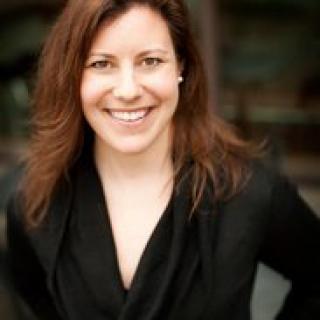 When this interview was given, Lara Davis was program director at Seattle’s award-winning Art Corps, which works to bring arts education to students in the Seattle area. A musician and audio artist, Davis also serves on the 16-member Seattle Arts Commission. This month, Davis moves to the city's Office of Arts and Culture team as the new Arts Program Specialist for the Creative Advantage Initiative.
When this interview was given, Lara Davis was program director at Seattle’s award-winning Art Corps, which works to bring arts education to students in the Seattle area. A musician and audio artist, Davis also serves on the 16-member Seattle Arts Commission. This month, Davis moves to the city's Office of Arts and Culture team as the new Arts Program Specialist for the Creative Advantage Initiative.
Tell me about Arts Corps’ programs.
Arts Corps partners with schools, community centers, crisis centers and low-income residences to provide access to high-quality, creative learning opportunities in the arts. We place artists with young people in community spaces to facilitate these creative journeys.
Courses are multidisciplinary. Teaching artists work with the students on dance, the visual arts, painting, ceramics, theater, singing, drumming and more.
Our core programs include the K–12 Out of School Time and residency program, and the teen artist program, which engages participants in the Arts Liberation and Leadership Institute, and includes the Youth Speaks Seattle program. Arts Corps’ third program is a whole (middle) school arts pilot called the Creative Schools Initiative, which supports arts-based learning and collaboration between the teacher and the teaching artist.
How did you get involved in Arts Corps?
My background is in education, social services and youth development. When I moved to the Seattle area in the late ’90s, I worked with children diagnosed with autism and learning disabilities in the Bellevue School District, followed by teaching and curriculum development for the Pacific Science Center. I then directed programming for girls at the East Cherry YWCA.
Arts Corps was a natural fit for both my experience and interests.
How does your background as an artist inform your work with Arts Corps?
Art making is about connecting. I approach my work in a way that is always looking for connectedness and collaboration. Art and creativity involve risk-taking. At Arts Corps, we step into places that are not comfortable, that compel courage and risk taking. I am a big believer that learning happens on those edges.
Arts Corps recently won a major national award. What makes the model work so well?
We are a very intentional and reflective organization. We try to be intentional about making creative practice the focal point of the way we work, and in every part of the organization. We take time to check in and assess our goals and challenges.
We also do an annual evaluation informed by multiple stakeholders (participants, program partners, teaching artists), and convene teaching artists for an annual retreat, and multiple times throughout the year, to share their teaching experiences, discuss successes and challenges, and learn from one another.
Why is access to the arts important?
Twenty-first-century learning is about developing the skills and habits young people need to be successful in life. The STEM movement — science, technology, engineering and math — needs to add an A, for arts. The arts are important if we want our young people to innovate and develop ideas to shape our future, and to be whole human beings.
How do you see Arts Corps affecting art education in Seattle?
Arts Corps is working as part of a coordinated effort with the Seattle public school district, the city and other community partners in what is called The Creative Advantage, a comprehensive arts education plan for Seattle public school students. This K–12 plan will launch in the “central pathway,” a term used for those schools running down the centerline of Seattle, which have been historically underserved, but also have a history of strong community partnerships.
You also serve as a Seattle Arts commissioner, a role appointed by the mayor or City Council members. What is your impression of the arts-education landscape in Seattle?
We are living at a very exciting time in Seattle for arts education. In addition to The Creative Advantage program coming up this year, there are a lot of possible educational opportunities to leverage within the city through the work of the Office of Arts & Culture, the Office for Education and the Office for Civil Rights, which collectively are working to address access, opportunity and structural barriers.
I remain hopeful about the future. It’s exciting to see decades of work starting to show up in large-scale, coordinated community partnerships.
What are the biggest challenges for Arts Corps?
Much of our work is relationship based, and there is always high staff turnover within these communities. That’s why it is so critical we have a strong community strategy for engagement. The continued challenges of race and social justice issues within education will always be something we are working to overcome.
I see our growth as deepening the quality of our work, connecting more fully at more levels within each community. The pilot Creative Schools Initiative is looking at deepening and strengthening our existing programs.
How can people get involved in supporting the work Arts Corps is doing?
Learn about local initiatives and hold our elected officials’ feet to the fire on issues concerning arts and education. Donate to and get involved with Seattle arts- and community-based organizations. Help to build awareness around the needs of the public schools in your neighborhood. Support young people in their self-determination and leadership!
Shannon Huffman Polson is the author of North of Hope: A Daughter's Arctic Journey. She can be found with her family in the mountains in Washington and Alaska, writing in coffee shops, and at www.aborderlife.com.












